As of April 19, 2022, the exchange rates for buying and selling one UAE Dirham (AED) in Pakistani Rupee (PKR) in the open market are as follows:
(more…)Author: Hamza Shahnawaz
-
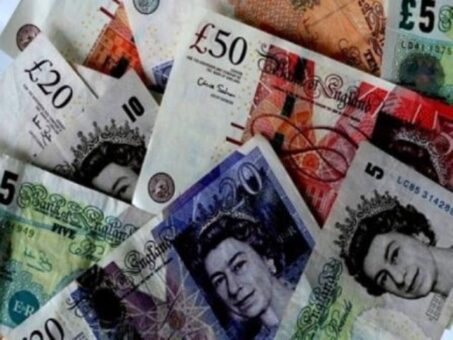
Pakistani Rupee to UK Pound Sterling on April 19, 2022
KARACHI: Following are the rates of buying and selling of one UK Pound Sterling (GBP) in Pakistani Rupee (PKR) in the open market on April 19, 2022:
Buying: Rs 234.00 to the UK Pound Sterling
Selling: Rs 236.50 to the UK Pound Sterling
The buying rate means an exchange company or a bank buys foreign currency from a customer.
The selling rate means an exchange company or a bank sells the foreign currency from a customer.
The rate has been updated at 10:30 AM Pakistan Standard Time (PST).
The UK Pound Sterling /PKR parity depends on open market rates, they are set by the market forces based on foreign currency demand.
Disclaimer: Team PKRevenue.com provides the available rates of the open market, which are subject to change every hour. Team PKRevenue.com provides the available exchange rates at the time of posting the story. So the team is not responsible for any inaccuracy of the data.
-
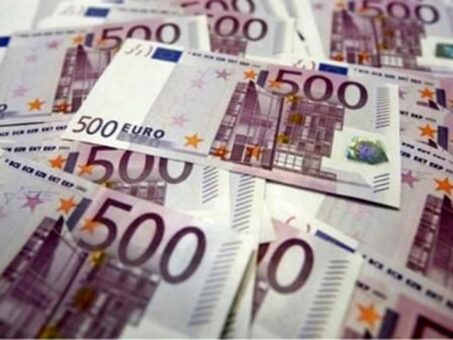
Pakistani Rupee to Euro on April 19, 2022
KARACHI: Following are the rates of buying and selling of one Euro (EUR) in Pakistani Rupee (PKR) in the open market on April 19, 2022:
Buying: Rs 193.00 to the Euro
Selling: Rs 195.00 to the Euro
The buying rate means an exchange company or a bank buys foreign currency from a customer.
The selling rate means an exchange company or a bank sells for foreign currency from a customer.
The rate has been updated at 10:30 AM Pakistan Standard Time (PST).
The Euro /PKR parity depends on open market rates, they are set by the market forces based on foreign currency demand.
Disclaimer: Team PKRevenue.com provides the available rates of the open market, which are subject to change every hour. Team PKRevenue.com provides the available exchange rates at the time of posting the story. So the team is not responsible for any inaccuracy of the data.
-
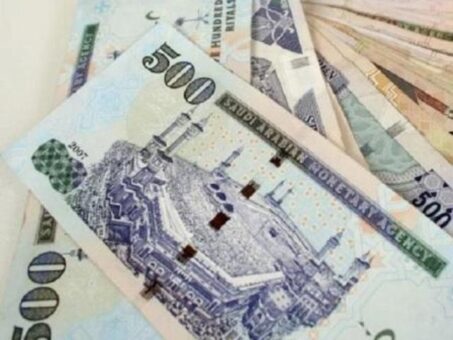
Pakistani Rupee to Saudi Riyal on April 19, 2022
KARACHI: Following are the rates of buying and selling of one Saudi Riyal (SAR) in Pakistani Rupee (PKR) in the open market on April 19, 2022:
Buying: Rs 48.50 to the Saudi Riyal
Selling: Rs 49.50 to the Saudi Riyal
The buying rate means an exchange company or a bank buys foreign currency from a customer.
The selling rate means an exchange company or a bank sells for foreign currency from a customer.
The rate has been updated at 10:30 AM Pakistan Standard Time (PST).
The Saudi Riyal /PKR parity depends on open market rates, they are set by the market forces based on foreign currency demand.
Disclaimer: Team PKRevenue.com provides the available rates of the open market, which are subject to change every hour. Team PKRevenue.com provides the available exchange rates at the time of posting the story. So the team is not responsible for any inaccuracy of the data.
-
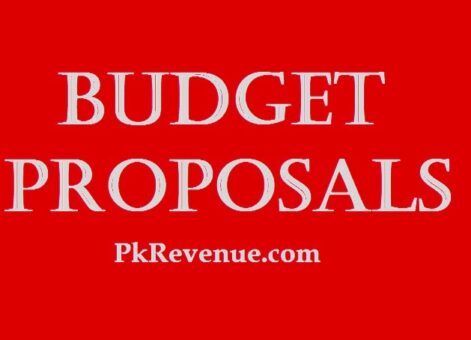
Minimum tax 0.2% suggested for listed chemical companies
KARACHI: Overseas Investors Chamber of Commerce and Industry (OICCI) has suggested that the minimum tax should be reduced to 0.2 per cent for listed companies with large turnover with lower profit margins.
The OICC in its proposals for budget 2022/2023 submitted to Federal Board of Revenue (FBR) made tax recommendations related to chemical, pesticides, fertilizers, paints and cement sectors.
READ MORE: Proposals for capital gain on disposal of securities by insurance companies
The chamber recommended that minimum tax rate should be reduced to 0.2 per cent for listed chemical companies with large turnover with low profit margins.
It recommended minimum tax at Import Stage for Fertilizer manufacturers and said: Clause b of Section 148(7) of Income Tax Ordinance, 2001 as deleted by the Finance Act, 2017 should be restated, which read as follows: “148(7) b fertilizer by manufacturer of fertilizer” to allow adjustment of tax deducted at import stage for fertilizer imported by a fertilizer manufacturer so as not to make it a Final Tax.
READ MORE: FBR urged to align corporate tax rate for banks
The chamber sought exemption under Clause 42 of Part IV of Second Schedule to the terminal operators. It recommended exemption under Clause 42 read with section 153(3) of the ITO, 2001 be available to all terminals without discrimination. The said clause be re-worded as follows:
“(42) The provisions of sub-section 3 of section 153 shall not apply in respect of payments received by a resident person for providing services by way of operation of terminal(s) at a sea-port in Pakistan or of an infrastructure project covered by the Government’s Investment Policy, 1997.”
READ MORE: OICCI suggests duty cut on locally manufactured cars
The OICCI highlighted anomaly between input and output sales tax for fertilizer manufacturers. It said for the fertilizer industry, the General Sales Tax (GST) on supply of natural gas as feed stock is at 5 per cent and as fuel stock is 17 per cent. However, the output GST rate on sales of finished goods i.e. urea is 2 per cent. This mismatch between input and output GST results in excessive input tax refundable build-up.
It is recommended: “GST rate on supply of natural gas for fertilizer industry should be zero percent.”
For sales tax rate on raw material of paints, the OICCI recommended:
i. Sales tax of 25 per cent should be imposed on some basic raw materials like Titanium dioxide and other similar categories for commercial importers.
ii. Enforcement measures to be made more effective in consultation with OICCI members, who are established taxpayers, to penalize tax evaders.
READ MORE: Return filing be made mandatory for account holders
The OICCI pointed out higher tax rates on fertilizer micronutrients. Macro nutrients being imported under Chapter 31 of Pakistan Customs Tariff, enjoy reduced duties and taxes representing only 8% of the value imported whilst in case of micronutrients being imported under Chapter 28, the import duties and taxes are quite high representing 29% of import value.
It recommended to make necessary amendments in the revenue regulation to reduce sales tax and import duties on import of micronutrients.
The authorities have been informed about dual taxation on dealers belonging to chemical sector under Section 236G and Section 233 of the Ordinance shall be removed.
It recommended that dealers of chemical sectors be removed from the scope of Section 236G who are already paying tax on their commission income under Section 233 of the Ordinance and are also appearing in Active Taxpayer List (ATL).
READ MORE: Unjustified audit notices annoy taxpayers
The OICCI sought exemptions withdrawn on import and supply of seeds for sowing.
It recommended sales tax exemption for the seeds industry be reinstated by withdrawal of amendments made through the Finance Supplementary Act 2021.
Concessions allowed to exploration and production Companies and their contractors under SRO 678(I)/2004 on custom duty on import of spares, chemicals and consumables. It is recommended E&P Companies are exempt from payment of additional customs duty (ADC) on imports for their off-shore projects. FSRU is an offshore installation and therefore imports for FSRU should be allowed the same concession as the E and P companies are allowed in condition (vii).
-

Proposals for capital gain on disposal of securities by insurance companies
KARACHI: The Federal Board of Revenue (FBR) has been proposed to notify rules for computation of capital gain on disposal of securities for insurance companies.
Overseas Investors Chamber of Commerce and Industry (OICCI) in its proposals for budget 2022/2023, said that as institutional investors, insurance companies are very important participants in the financial market, especially in the capital market.
READ MORE: FBR urged to align corporate tax rate for banks
But unfortunately there is no rules exist for computation of capital gain on disposal of Securities for insurance companies as Rule 13E for computation of capital gain on disposal of securities is for Companies that fall under section 37A of Income Tax Ordinance, 2001.
“Rules 13D for computation of Capital gain on disposal of securities under Section 37 A should also be applicable on Fourth Schedule of the Income tax ordinance, 2001,” it recommended.
READ MORE: OICCI suggests duty cut on locally manufactured cars
The OICCI also pointed out personal Lines / micro insurance products of Insurance Companies should be exempted from Federal Excise Duty.
“The insurance related exemptions provided in Table II of the Third Schedule of the Federal Excise Duty Act 2005 should include the following:
3) Marine insurance for export, 4) Life insurance, 5) Health insurance, 6) Crop Insurance, 7) Livestock insurance, 8) Personal accident Insurance, 9) Travel Insurance, and 10) Home property/ Household Insurance.”
READ MORE: Return filing be made mandatory for account holders
It further noted that through Finance supplementary (Second Amendment) Bill, 2019, a proviso was inserted in section 37A, which states that losses sustained during the tax year 2019 and onwards on the disposal of securities chargeable to tax under the above section if not fully set off during the year, would be allowed to carry forward to the next year and subsequent two tax years, to be offset against capital gain earned in those years chargeable to tax under Fourth schedule of the Ordinance.
READ MORE: Unjustified audit notices annoy taxpayers
As the amendments in the supplementary Bill will not be effective for Insurance Companies unless the said amendments will be made in the Fourth Schedule to the Income Tax Ordinance 2000,
It proposed that similar amendments should be made in the Fourth Schedule by inserting new Clause 6C.
-
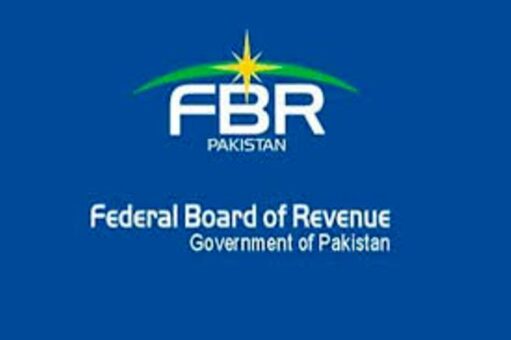
FBR urged to align corporate tax rate for banks
KARACHI: Federal Board of Revenue (FBR) has been urged to bring corporate tax rate for banking companies at par with the other sectors.
Overseas Investors Chamber of Commerce and Industry (OICCI) in its proposals for budget 2022/2023 pointed out towards higher effective tax of banking sector.
It recommended that corporate tax rates for the banking sector should be aligned with other sectors. Super Tax relief, as granted to other industries, should be given to banking sector as well.
The OICCI also pointed out enhanced rate of tax on income from investment in Federal Government Securities (Rule 6C of Seventh Schedule). It recommended that the banking sector is already burden with higher tax rates as compared to other service sectors. Incremental tax applied under Rule 6C (6A) of seventh schedule of Income Tax Ordinance, 2001 should be deleted, whereby enhanced rate is applied on banks total income ratio (ADR).
Alternatively, enhanced tax shall be reverted to the previous condition, i.e. incremental tax shall be applicable on Additional income from additional investment in government securities rather than total income.
The overseas chamber further recommended the original provisions of the Seventh Schedule should be restored where provision for bad debts as per the Prudential Regulations of SBP and supported by an Auditors certificate was allowable as a tax deduction to the banks.
Alternatively, threshold for allowing provision for bad debts should be increased to 2 per cent of gross advances to corporate customers without the categorization of loss, doubtful or substandard and delete the Explanation inserted through Finance Act, 2019 along with the Clauses 1(d), (e) and (f).
Overriding Provision in Seventh Schedule to Income Tax Ordinance, 2001. The rule 9 of the Seventh Schedule of ITO 2001 should be deleted as it is being misused and leading to unnecessary litigation.
Regarding Islamic banks, the OICCI said Rule 3 (1) & (2) of Seventh Schedule of Income Tax Ordinance, 2001 should be replaced with the following text under Rule 3(1):
“The audited financial statements of Islamic Banks and Disclosure related to Islamic window operations of the conventional banks as contained in the audited financial statements submitted to the State Bank of Pakistan shall form the basis for the calculation of income tax liability as provided in this Schedule.”
The OICCI pointed out withholding tax on all modes of Islamic financing and recommended that tTo provide tax neutrality for assets financed by Islamic banks and Islamic windows of conventional vis- a vis conventional banks. Following clarification be inserted after clause 153(7)(iii):
“For the removal of doubt, it is clarified that any goods delivered under an Islamic modes of financing by a bank or financial institution approved by the State Bank of Pakistan or the Securities Exchange Commission of Pakistan, shall not be considered as sale of goods for the purpose of this section.”
-

Foreign currency rates in Pak Rupee – April 18, 2022
KARACHI: Following are the open market exchange rates of foreign currencies in Pak Rupee (PKR) in Pakistan on April 18, 2022 (The rates are updated at 10:50 AM (Pakistan Standard Time):
Currency Buying Selling Australian Dollar (AUD) 132.90 134.90 Bahrain Dinar (BHD) 386.50 388.50 Canadian Dollar (CAD) 140.90 142.90 China Yuan (CNY) 23.55 23.95 Danish Krone (DNK) 23.65 23.95 Euro (EUR) 193.50 195.50 Hong Kong Dollar (HKD) 16.60 16.85 Indian Rupee (INR) 2.03 2.10 Japanese Yen (JPY) 1.41 1.44 Kuwaiti Dinar (KWD) 481.85 484.35 Malaysian Ringgit (MYR) 36.75 37.10 NewZealand $ (NZD) 96.85 97.55 Norwegians Krone (NOK) 17.50 17.75 Omani Riyal (OMR) 392.95 394.98 Qatari Riyal (QAR) 39.95 40.55 Saudi Riyal (SAR) 48.65 49.30 Singapore Dollar (SGD) 129.50 131.00 Swedish Korona (SEK) 18.75 19.00 Swiss Franc (CHF) 160.35 161.25 Thai Bhat (THB) 4.80 4.90 U.A.E Dirham (AED) 48.75 49.40 UK Pound Sterling (GBP) 232.90 235.40 US Dollar (USD) 180.90 182.90 Disclaimer: Team PKRevenue.com provides the available rates of the open market, which are subject to change every hour. Team PKRevenue.com provides the available exchange rates at the time of posting the story. So the team is not responsible for any inaccuracy of the data.
-

Pakistani Rupee to US Dollar on April 18, 2022
KARACHI: Following are the rates of buying and selling of one US dollar (USD) in Pakistani Rupee (PKR) in the open market on April 18, 2022:
Buying: Rs 180.90 to the US Dollar
Selling: Rs 182.90 to the US Dollar
The buying rate means an exchange company or a bank buys foreign currency from a customer.
The selling rate means an exchange company or a bank sells the foreign currency from a customer.
The rate has been updated at 10:50 AM Pakistan Standard Time (PST).
The US Dollar /PKR parity depends on open market rates, they are set by the market forces based on foreign currency demand.
Disclaimer: Team PKRevenue.com provides the available rates of the open market, which are subject to change every hour. Team PKRevenue.com provides the available exchange rates at the time of posting the story. So the team is not responsible for any inaccuracy of the data.
-
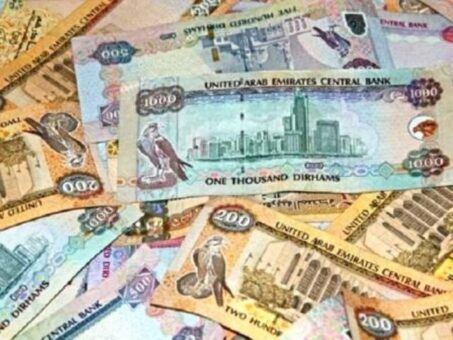
Pakistani Rupee to UAE Dirham on April 18, 2022
As of April 18, 2022, the exchange rates for buying and selling one UAE Dirham (AED) in Pakistani Rupee (PKR) in the open market are as follows:
(more…)